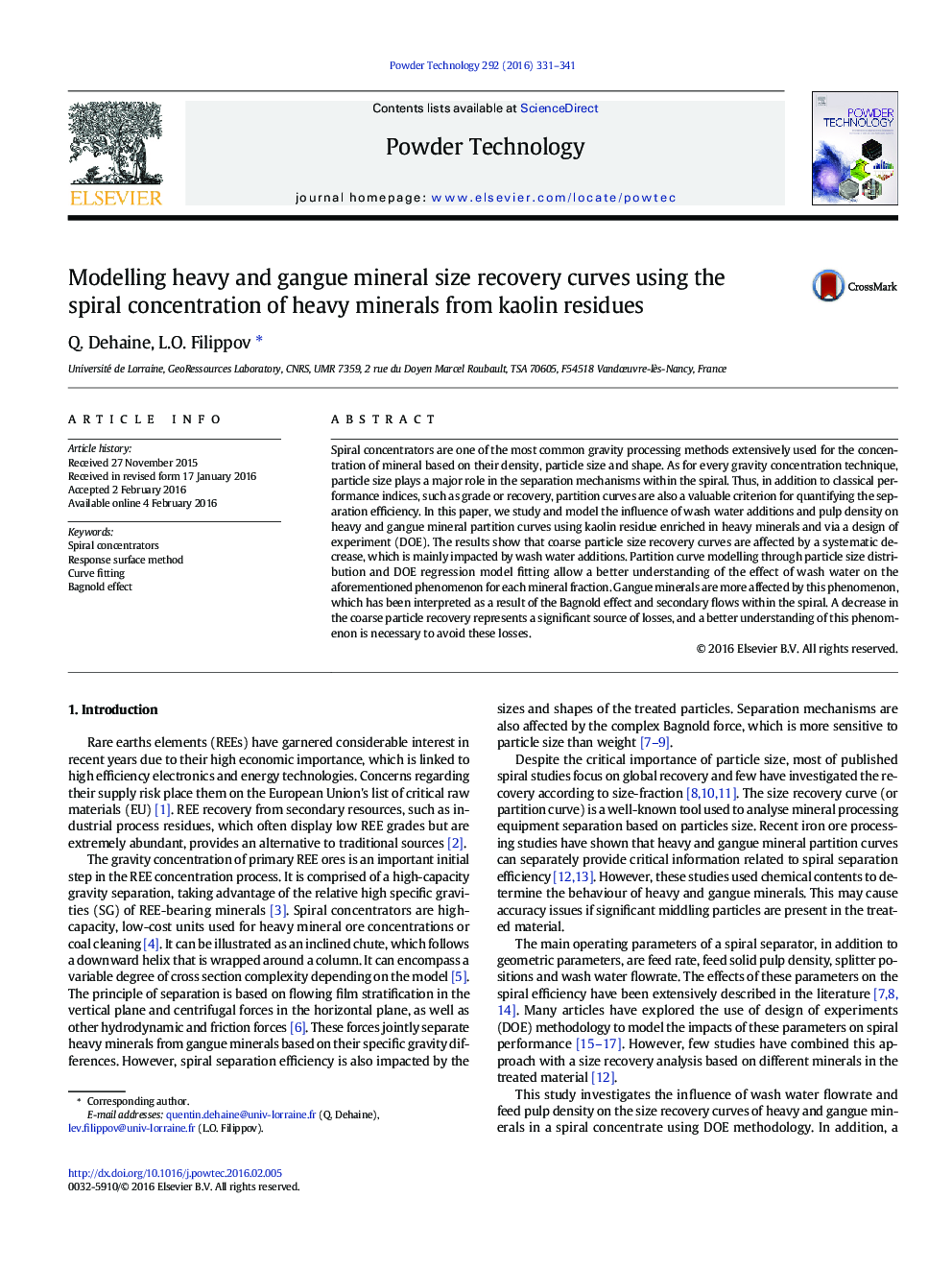| Article ID | Journal | Published Year | Pages | File Type |
|---|---|---|---|---|
| 235147 | Powder Technology | 2016 | 11 Pages |
•Mineral partition curve models are derived through a design of experiments.•Partition curve shape is mostly affected by wash water above pulp density.•A systematic drop on recovery is observed for coarse particles at high wash water.•Gangue minerals are more impacted by wash water than heavy minerals.•Combined effect of Bagnold forces and secondary flows defines particles segregation.
Spiral concentrators are one of the most common gravity processing methods extensively used for the concentration of mineral based on their density, particle size and shape. As for every gravity concentration technique, particle size plays a major role in the separation mechanisms within the spiral. Thus, in addition to classical performance indices, such as grade or recovery, partition curves are also a valuable criterion for quantifying the separation efficiency. In this paper, we study and model the influence of wash water additions and pulp density on heavy and gangue mineral partition curves using kaolin residue enriched in heavy minerals and via a design of experiment (DOE). The results show that coarse particle size recovery curves are affected by a systematic decrease, which is mainly impacted by wash water additions. Partition curve modelling through particle size distribution and DOE regression model fitting allow a better understanding of the effect of wash water on the aforementioned phenomenon for each mineral fraction. Gangue minerals are more affected by this phenomenon, which has been interpreted as a result of the Bagnold effect and secondary flows within the spiral. A decrease in the coarse particle recovery represents a significant source of losses, and a better understanding of this phenomenon is necessary to avoid these losses.
Graphical abstractFigure optionsDownload full-size imageDownload as PowerPoint slide
